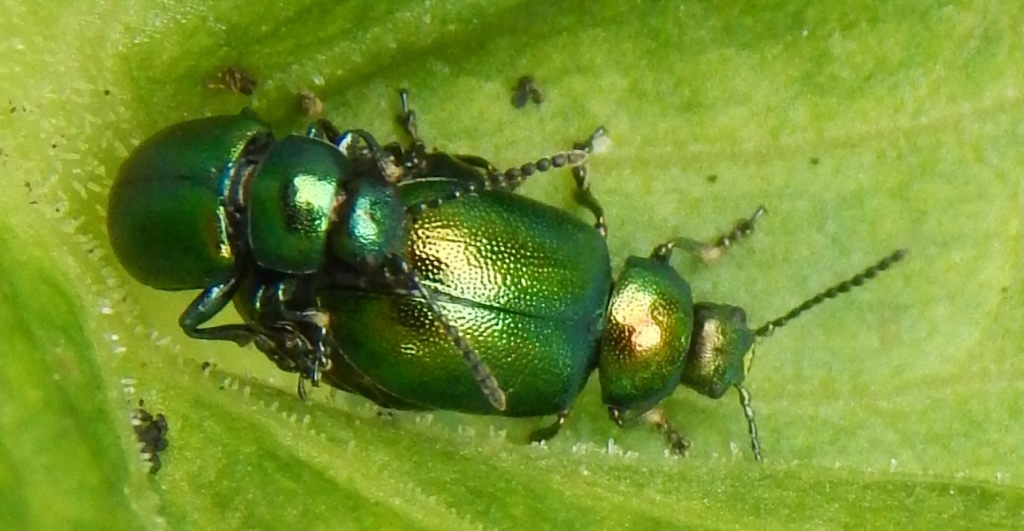
[160] Gastrophysa viridula, Green Dock Beetle
Introduction
Gastrophysa viridula, the Green Dock Beetle, is a small beetle noted for the pregnant form of the female in the mating period.
It is also known as Green Sorrel Beetle.
Taxonomy
Kingdom – Animals
Phylum – Arthropods
Class – Insects
Order – Coleoptera (Beetles)
Superfamily – Chrysomeloidea
Family – Chrysomelidae (Leaf Beetles)
Subfamily – Chrysomelinae (Broad-bodied Leaf Beetles)
Genus – Gastrophysa
Scientific Name – Gastrophysa viridula
Name
Gastro-physa comes from Greek roots meaning abdomen inflated, from the phenomenon of physogastry described below. (I am not sure which of these two words may have produced the other one by reversal of the roots.) The Latin viridula means green.
Description
The family Chrysomelidae contains about 50 000 species. They are mostly small with dome shaped bodies. There is no simple way to define the family but you could start by counting the segments on each leg. But be careful – the fourth tarsal segment on all of them are very small and are hidden by the third. There are many subfamilies of which Wikipedia says, ‘The precise taxonomy and systematics are likely to change with ongoing research,’ but you have heard me say that about almost every species so far!
As for many small beetles, the elytra of Gastrophysa viridula are glossy and metallic in appearance in sunlight, covered with a pattern of tiny indentations. They are green but may appear golden or other colours in bright light. The antennae are fairly long and serrated in appearance.
They produce from two to four broods each year and the last brood hibernates as an adult.
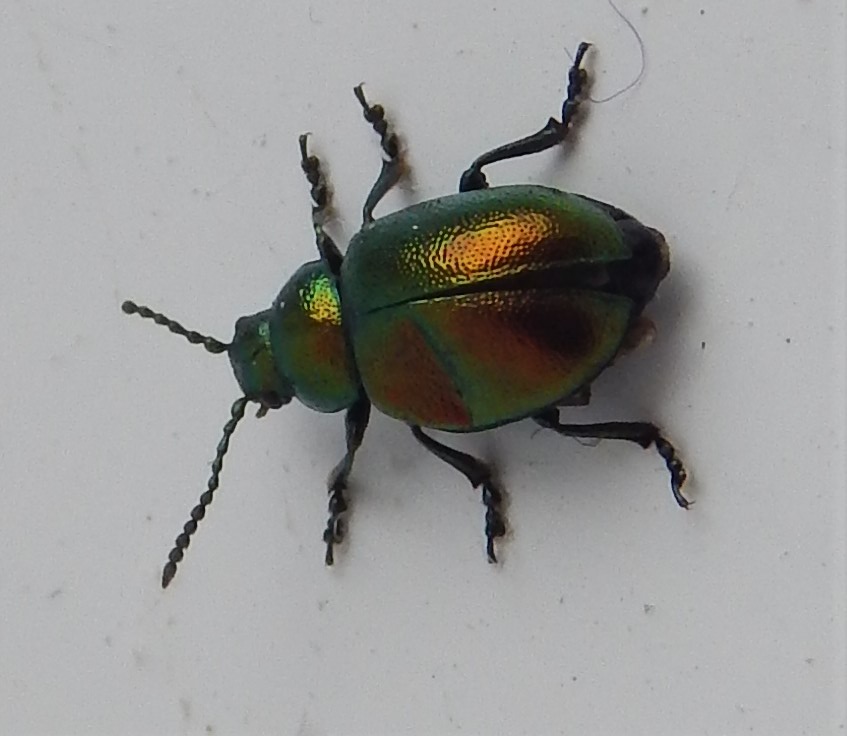
Like all species of Gastrophysa this beetle exhibits physogastry (or physogastrism.) The abdomen of the female is enlarged to enable her to produce large numbers of offspring. Even without this, the female is about twice the size of the male. She produces over a thousand eggs for each brood.
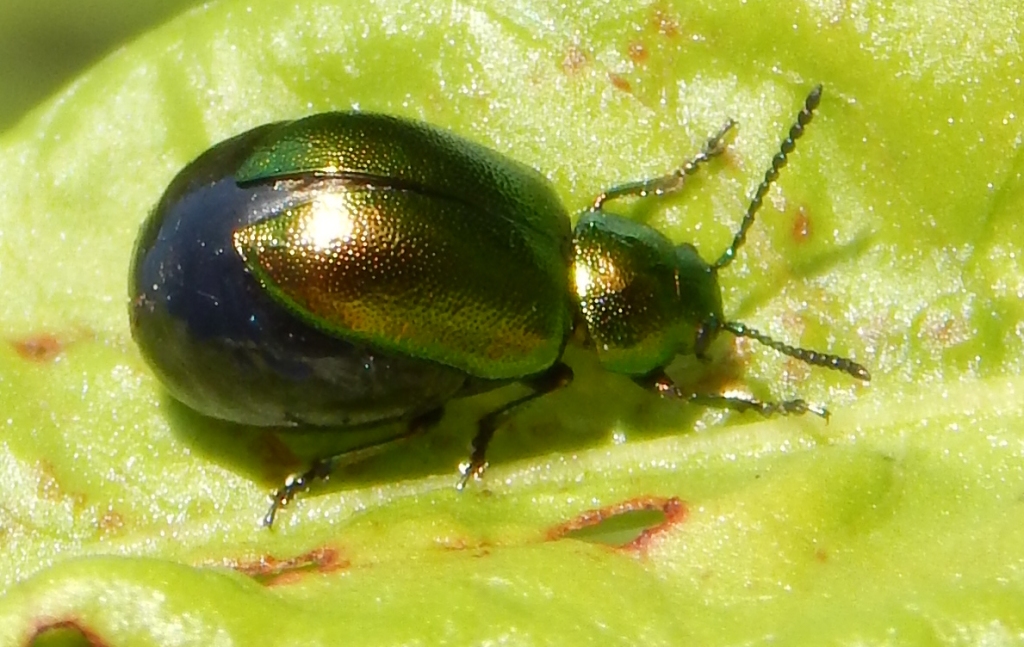
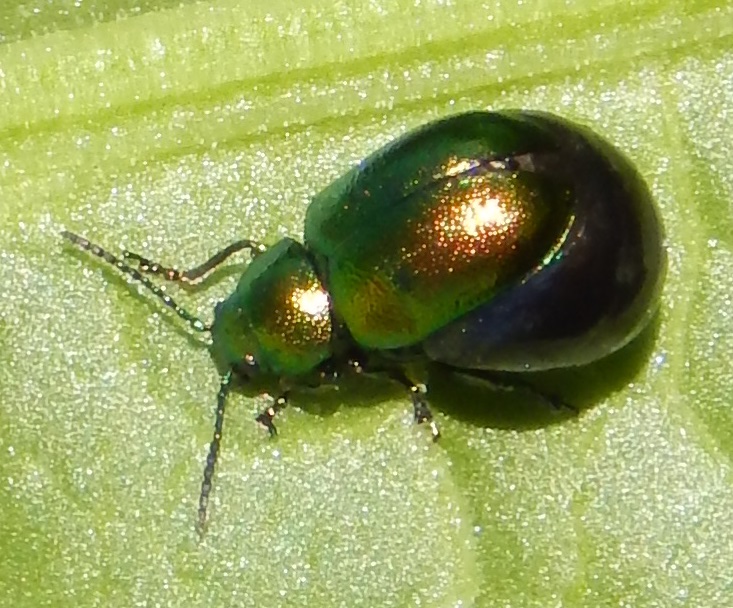
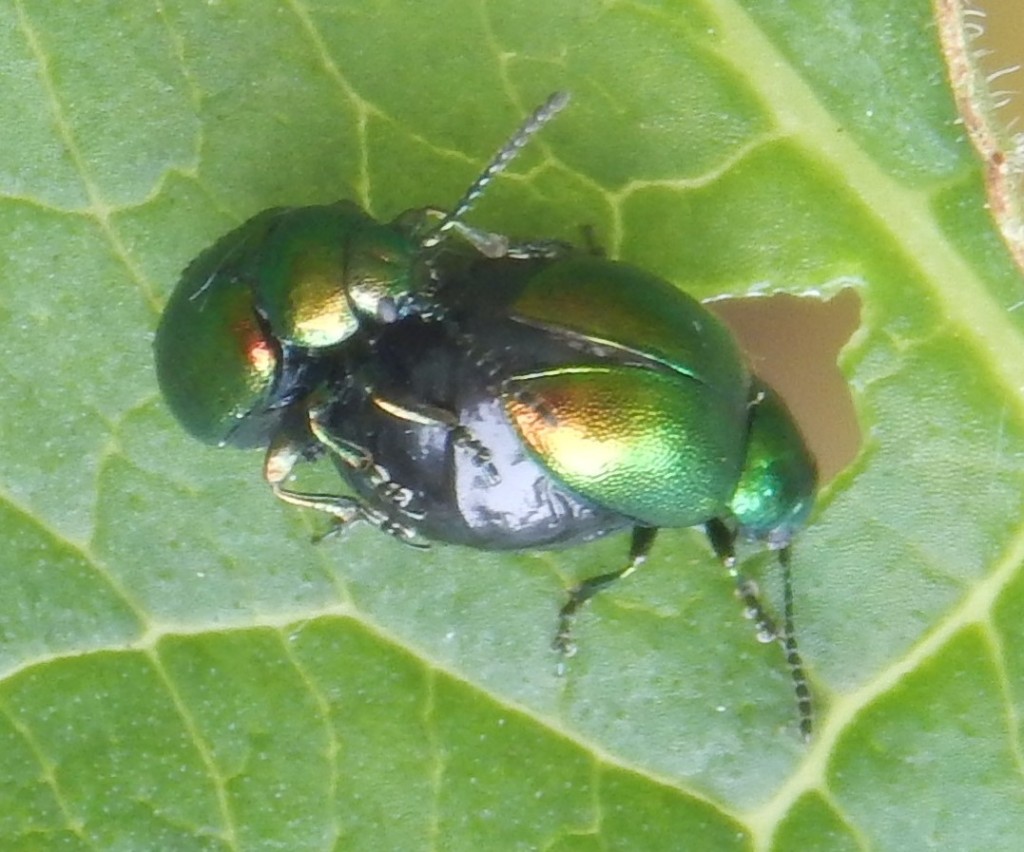
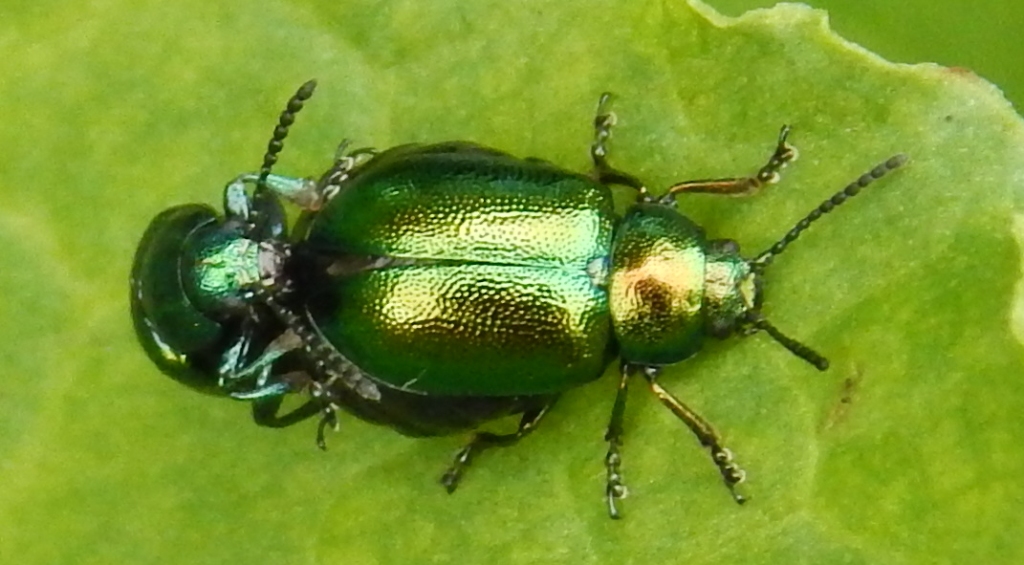
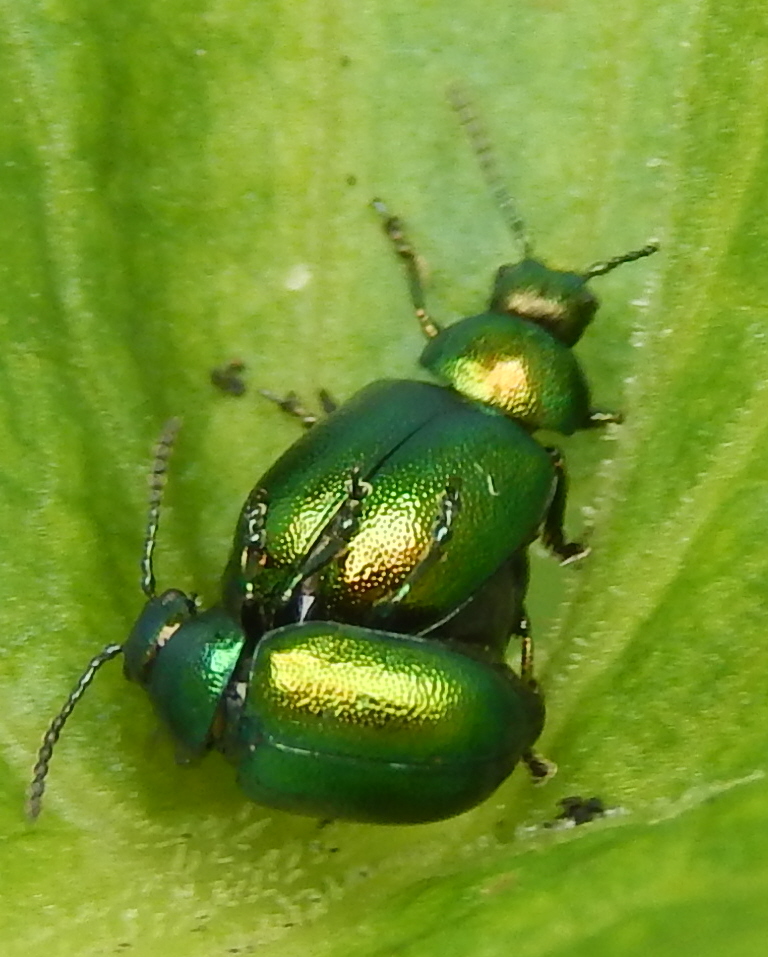
After three instars the larva pupates underground and the adult emerges in about a week.
Habitat
Gastrophysa viridula is common and widespread in Britain and found over much of Europe.
Larvae grow on species of Rumex – Dock, including Sorrel. Adults can occasionally feed on other species.
Other Notes
I am sure you can search out individual types of beetle but you are most likely to spot any from the family Chrysymelidae by just looking at plants as you walk in the countryside. You may spot one of the thousands of species I have missed!


